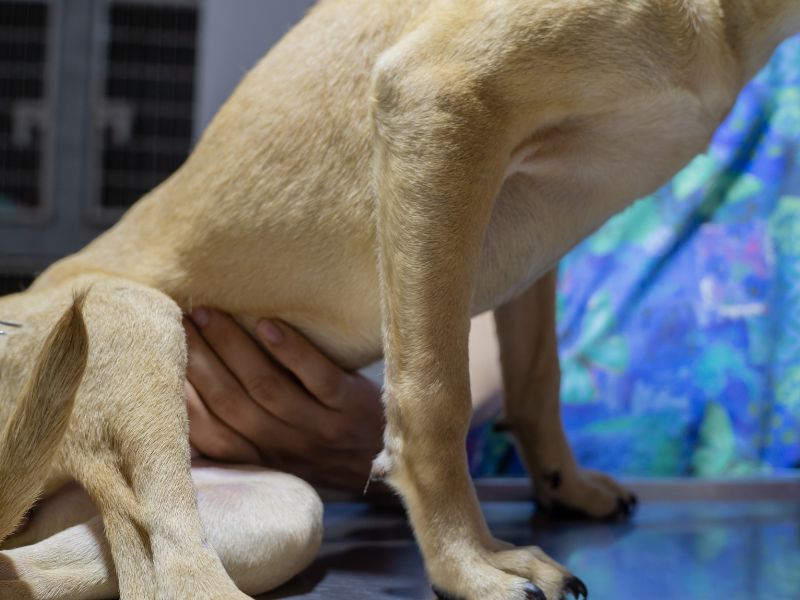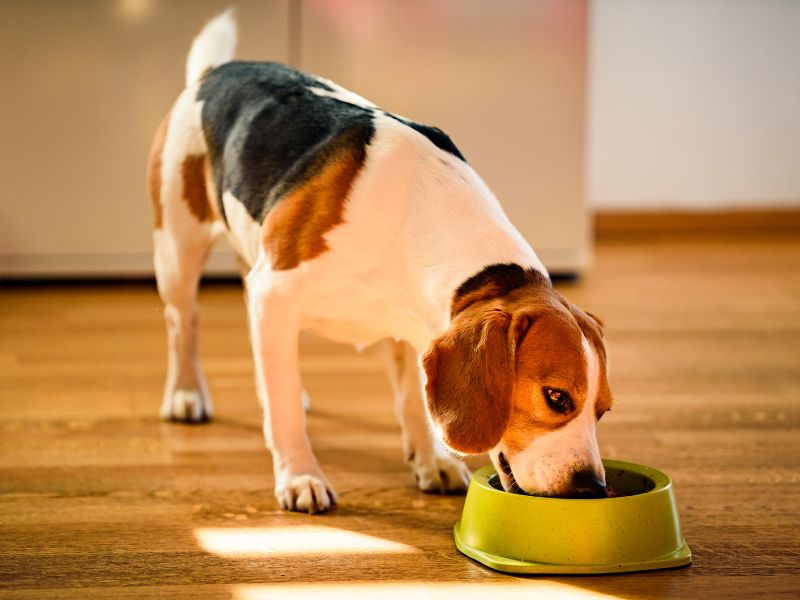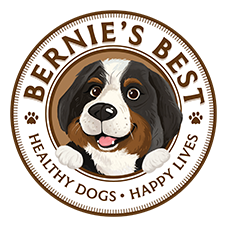When you’re thinking about switching dog food, whether it’s to adult dog food from puppy food, senior dog food, or even a new brand of your dog’s current food, it’s crucial to understand what happens in your dog’s gut. Transitioning dog diets can be a delicate process, but with the right approach and some cutting-edge science, you can make the switching dog food experience smooth for your furry friend.
The Science of Dog Food Digestion
What happens when your dog eats and begins digesting? Well, an awful lot, actually!
Your dog’s digestive system is a series of organs and enzymes working together. It starts with the mouth and esophagus, leads to the stomach, then the small and large intestines, and ends at the rectum. While not directly in this tract, the liver and pancreas are essential for digestion and nutrient processing.
Dogs have more teeth than humans, allowing them to chew food more efficiently. They also don’t have digestive enzymes in their saliva like we do, and these enzymes primarily serve as a lubricant for the food to pass easily through the esophagus to the stomach.
Enzymatic digestion then begins in the stomach. Your dog’s stomach is equipped with gastric folds, hydrochloric acid, and enzymes, which turn food into a liquidy substance called chyme. A dog’s stomach can store food for 8-12 hours, much longer than humans, allowing them to digest food over an extended period.
Then, food undergoes nutrient extraction and absorption in the small intestine, mostly in the duodenum and jejunum. The large intestine then removes moisture and extracts minerals, forming fecal material. This process is critical for extracting and utilizing nutrients from the food.
The pancreas and liver are vital for dog digestion. The pancreas produces enzymes and hormones critical for breaking down fats, proteins, and sugars. The liver produces bile necessary for fat digestion. These organs play a significant role in nutrient absorption and processing.
Who knew there was so much science in every bite your dog took?
Well, we do, and it’s also important for you to understand because if you’re changing dog food, the dog food transition plan matters.
Reasons for Changing Dog Foods
People often change their dog’s food for various reasons, such as age transitions (from puppy food to adult dog food or to senior dog food), health-related issues (like allergies or specific medical conditions), or simply due to availability or preference changes. Each stage of a dog’s life has different nutritional requirements. For instance, puppies require more protein and certain nutrients for growth, while senior dogs may need fewer calories but more fiber and joint-supporting nutrients. Switching dog foods to match these evolving is the best way to maintain optimal health.
How to Switch Dog Food
Transitioning to a new dog food should be gradual to avoid gastrointestinal upset. The recommended approach is to mix the new food with the dog’s current food, gradually increasing the proportion of the new food over 7-10 days. This allows the dog’s digestive system to adjust to the new food. A sudden change in diet can lead to stomach upset or diarrhea, as the gut microbiome needs time to adapt to the new types of nutrients and ingredients.
Steps for Switching Dog Foods
- Start by mixing about 25% of the new food with 75% of their current food.
- Gradually increase the proportion of the new food over the next 7-10 days.
- Monitor your dog for any signs of discomfort or allergic reactions.
- If no adverse reactions occur, continue to increase the new food until the old food is completely phased out.
How to Find a Similar Formula When Changing a Dog’s Food
If you need to find a similar formula due to issues like availability, start by comparing the ingredient lists and nutritional profiles. Look for a new food that matches the current food’s primary ingredients and key nutrients (like protein, fat, and fiber levels). This can help minimize the impact of the change on your dog’s digestive system.
3 Symptoms To Watch For During The Dog Food Transition
During the transition, watch for signs of stomach upset, such as diarrhea, vomiting, or a lack of appetite. These symptoms can occur if the transition is too fast or if the new food doesn’t agree with the dog’s digestive system. Loose, runny stools in particular, can result from a rapid change in diet, as the gut microbiome and digestive enzymes may not immediately adapt to the new food composition.
What If My Dog Isn’t Adjusting?
If your dog shows persistent symptoms of gastrointestinal distress, such as ongoing diarrhea, vomiting, or lethargy, or refuses to eat the new food, you might want to check with a veterinarian. These signs could indicate a food allergy, sensitivity, or other underlying health issues that require professional assessment and guidance.
Making The Switch From Your Current Dog Food: What Happens?
Successfully switching your dog’s food involves a careful and gradual approach and attentive observation. A lot is going on when you change to a new food!
- Microbiome Shifts Rapidly: A study from the University of Illinois revealed that when dogs switch foods, their gut microbiome – the community of microbes living in their intestines – changes rapidly. This shift can happen in a matter of days, regardless of the type of new dog food being introduced. The diversity and composition of the microbiome stabilized around day six after changing dog foods.
- Metabolites and Microbial Changes: Within just two days of starting new food, microbial metabolites (the chemical products of microbial metabolism) begin to change. These metabolites are critical for your dog’s overall health, as they impact nutrient digestion and the production of postbiotics, which are beneficial compounds derived that come from bacterial activity.
- Gut Health Impacts Overall Health: The gastrointestinal microbiome plays a significant role in your dog’s overall health. It influences gastrointestinal diseases, allergies, oral health, weight management, diabetes, and kidney disease. The composition and function of the microbiome are affected by the different components in dog food, like carbohydrates, proteins, fats, prebiotics, and probiotics. A troubling change can upset that delicate balance.

Although the dog gut typically adapts quickly to new dog foods, a gradual transition is always recommended. This helps prevent stomach upset, loose stools, or flatulence. A common guideline is to shift to the new dog food over a seven-day period. We recommend Bernie’s Perfect Poop with every meal, but especially as you switch dog food because you don’t want your dog’s diet to cause any digestive issues like diarrhea or food sensitivity. Transitioning your dog to a new food is more than just changing dog food. It’s also about understanding and supporting their gut health. Perfect Poop was created so we could take care of our own dog’s gut health, and we want to help you take care of yours too!


